Review for Honey and Clover: Complete Collection
Introduction
We almost had Honey and Clover in the UK. You probably won’t believe me when I say that it was actually Manga Entertainment that announced they had the licence for this show back in the Autumn MCM Expo of 2008. They also announced Ichigo 100% that year, and rumours were flying of the Pretty Sammy series coming to the UK from them. None of that ever happened. Ichigo 100% is a harem comedy, so that had a possibility, but this is Manga Entertainment we’re talking about, continuing a legacy of blood and guts, and video nasty exploitation anime since the mid-nineties. It’s tried to shed that image on many an occasion, and has broadened its appeal in terms of the titles it has released over the years, but back in 2008, they were using the sword-slash version of their logo, releasing shows like Claymore and Shigurui Death Frenzy. So it’s unsurprising that Honey and Clover in particular fell by the wayside, one of those rare shows that we get in the West and particularly in the UK, that are aimed predominantly at female audiences. After being tantalised and then cruelly denied by Manga back then, Honey and Clover remained lodged in my hindbrain as a title that I was determined to watch one day. Thanks to the Madman Entertainment clearance sale last year, I finally get my chance, and I take a look at this Australian Complete Collection, comprising both seasons of Honey and Clover.
We’re often told that going to university is meant to be the best time of your life, but the reality can be a lot more challenging. That’s what Yuta Takemoto found when he went to art college, and the only accommodation he could afford was a room in a dilapidated apartment building, along with similarly straitened students. But alongside senior Takumi Mayama, and eternal student Shinobu Morita they make the best of it, finding pleasure in the small things. Of course things get complicated when relationships get involved, and Takumi’s got a crush on an older woman, while he’s being pursued by fellow student Ayumi Yamada. And when a shy art prodigy named Hagumi Hanamoto starts at the college, both Yuta and Shinobu fall for her.
This release collects all the episodes of season 1 across 4 discs, and season 2 across discs 5 & 6, from Madman Entertainment (note these episode titles are from the subtitled Japanese next episode previews, not the episode listing on the discs).
Disc 1
1. I Saw Someone Fall in Love For the First Time
2. Two Loves Start Turning
3. Two Loves, Unrequited
4. He and She Sway Slowly
5. Thinking of Mother Back Home
6. The Past, The Tears, and The Confession
7. We’re Searching for a Miracle
Disc 2
8. I Couldn’t Leave You Alone
9. That Brooch Was So Heavy
10. Crossing the Sky
11. Pushed Around By Love
L. We Came Face to Face with a Legend
12. The Sudden Kiss: The Sudden Parting
Disc 3
13. That One Thing Was All I Wanted to Hear
14. I Touched Her in a Dream
15. You’re Such a Fool! What Were You Thinking?
16. The Moon is Calling Her
17. I Don’t Understand My Own Feelings
18. He Came Back
F. You’re the Fashion Champ
Disc 4
19. Time Begins to Move Forward Again
20. I Said a Prayer to the Moon Above Us
21. I’d Always Been Afraid
22. Like a Flower Wet with Rain
23. Now, I Start Running
24. We’re a Ferris Wheel that Keeps on Turning
Disc 5
1. And So We Go Around, Yet Again
2. I Couldn’t Even Say it if I Wanted To
3. I Don’t Want to See Your Tears
4. I Won’t Let You Go Anywhere
5. Happy, Yet in Pain
6. We Never Did Make It to the Beach
Disc 6
7. Going Forward... Towards the Light
8. We Didn’t Know
9. I Feel Powerless
10. When I Was Younger, I Saw God
11. Please Give Me Your Life
12. Honey and Clover, and...
Picture
Honey and Clover gets a 1.78:1 anamorphic transfer in native PAL format with the 4% speed-up that implies. The image is clear and sharp, with no particular sign of compression or similar artefacts, although the second season opening credits are a little jerky, indicating something not quite spot on with the conversion. This is a show aimed more at a female demographic, and that tells in the art style, the more elegant character designs, the pastel colour palette, and the softer feel to the animation. Just like in shows such as Ristorante Paradiso and House of the Five Leaves, the character designs are a little more angular, while mouths are larger, facial proportions a little more realistic. The animation is smooth, although more of the effort goes into the overall look of things, rather than specific moments of animation. Honey and Clover is a very pleasing show to look at.
Sound
You have the choice between DD 2.0 English and Japanese, with optional translated English subtitles. Plot specific on screen text has burnt in English translated captions, overlaid in a font and at an angle in keeping with the style of the original text. I went with the original language version, and was happy enough with the experience, although I did sample the dub and found it to be pretty nicely judged when it came to character and emotion. One great thing about Honey and Clover is the incidental music, with quite a few songs from Suga Shikao used in the soundtrack. That focus on music might make the PAL speedup a tad disappointing, as the telltale wobble of pitch correction is present at times to the point of distraction. The subtitles too are a bit of a chore to read, given a small font prone to colour bleed, and not too great when it comes to timing and formatting. A short bit of dialogue from a character might get two lines of English as a translation, and it will flash by too quickly to read, especially at that size, prompting a quick skip back and pause. On disc 3 at 1.44:56, there was a glitch in the Japanese audio track.
Extras
You get one of those reinforced Amaray cases, just a smidge thicker than normal, to contain all six discs. You get two discs overlapping on the front pane, two on the rear, and one disc either side of a central hinged panel. There’s also poster art on the inner sleeve.
The discs present their content with static menus and jacket pictures.
Disc 1
Here you will find Cultural Terms, 3 pages of text entries offering a glossary for some of the terms used in the first 7 episodes.
Disc 2
You’ll fine 3 more pages of Cultural Terms here.
Making the Animated Opening lasts 11:01, and goes behind the scenes of the opening sequence, with a lot of stop-motion dish animators and food choreographers at work, with interviews too.
You get the textless credits, a 1:52 slideshow of Production Art featuring the characters, the English Production credits in a 20 second reel, and the Japanese production credits translated into English in 13, 30-second reels. Finally there are Madman trailers for Vampire Knight (ditch the Kazé release and import), Spice & Wolf, Nana, and the Eureka Seven Movie.
Disc 3
Here you’ll find 2 pages of Cultural Terms.
Disc 4
There’s quite a bit on this disc, although no Cultural Terms this time.
Screening Tea Party lasts 2:55 and takes us to a Honey & Clover Exhibition, where the first episode of the anime was premiered.
Tokyo Anime Fair lasts 7:09, and presents more promotional efforts from the show’s creator and cast.
KABA.chan Tries Voice Acting lasts 3:54 and the ‘zany’ presenter from the Anime Fair gets his chance to voice a character in the show.
You get the second textless credit sequences, a 1:52 slideshow of productions art, the English language credit reel running to 20 seconds, 6:50 of the Original Japanese Production Credits translated into English for all 13 episodes, and finally Madman trailers for The Melancholy of Haruhi Suzumiya Season 2 (even the trailer’s in mono), Summer Wars, Nana, and Evangelion 1.11.
Disc 6
The Cultural Terms return here, three pages worth.
The big extra here is the Voice Acting Karaoke, which lets you dub your own voice over a character in certain scenes. This was a featurette on the Japanese release, but Viz Media have localised it for the English market, offering two versions of the featurette, one with English dialogue, and one with Japanese dialogue (with convenient romanji text to help you sound out the words). Both featurettes run to 8:07.
You get the textless credits for the second season, a 1:52 Production Art slideshow gallery, the English Production Credits running to 21 seconds, and 6½ minutes of Japanese Production Credits translated to English for all of the episodes.
Finally there are Madman trailers for The Melancholy of Haruhi Suzumiya Season 2, Summer Wars, Nana Collection 1, and Evangelion 1.11.
Conclusion
A few months ago, I had the pleasure of reviewing Golden Time, and remarked on how rare it was for an anime romance, one eschewing the usual high-school harem set-up and instead opting for something a little more realistic and monogamous, and set in university. It turns out to be not as rare as all that, as Honey and Clover did it before Golden Time, and in some ways did it better, not needing the narrative crutch of an amnesiac protagonist. It has a far larger story, centring on a group of friends, and it isn’t just about one relationship, rather a network of relationships. In many respects, Honey and Clover is a soap opera in anime form blending comedy, drama and romance, and believe it or not, in this instance that is a good thing. It’s also useful that this is the complete collection, collecting Seasons 1 and 2 together, as other than a recap episode, Season 2 is a direct continuation of the story, leading to the conclusion. It’s incomplete with just the first season. You can also see why Manga Entertainment didn’t release the show in the end, as the subject matter is so far from their usual anime remit that I’d doubt they’d know how to market it.
Given the size and scope of the story, taking place over four years, and with many characters and plotlines, you might be forgiven for thinking it’s a hard show to get into. That couldn’t be further from the truth, as Honey and Clover starts very small scale, with just one character, and grows naturally from there. The show begins with Yuta Takemoto, relating how a childhood bicycle ride became a test, then segueing into his first year at art college, by introducing the ramshackle dormitory where he lives, along with the people that he shares with, hard-working and studious third year student Takumi Mayama, and eternal student and eternal goofball Shinobu Morita. At college, we also meet another student, Ayumi Yamada, and it quickly becomes apparent that she’s sweet on Takumi, although the feelings aren’t reciprocated. We also meet their popular lecturer, Shuji Hanamoto, and at the end of the first episode we’re introduced to his cousin, the diminutive Hagumi Hanamoto who is looking to start at the college. And by the end of that first episode, it also becomes clear that both Yuta and Shinobu are falling for Hagu.
That’s the core cast and dynamic established, and as the story unfolds, the cast grows organically. We quickly learn that the reason Takumi doesn’t return Ayumi’s affections is that he’s obsessed with the woman he assists in his part time job, Rika Harada. She, her husband and Shuji were an inseparable trio when they were students at college, but subsequently she and her husband were in a car wreck which claimed his life and grievously injured her. Shuji began by helping with her healing and rehabilitation, but with too much history between them, he left and instead recommended that Takumi go to work for her as she tried to continue forward with her husband’s business. Only Takumi went and fell for her, which sets up a triangle of unrequited between Rika, Takumi and Ayumi.
As the story progresses, we meet Ayumi’s family at the shop they own, and where she and Hagu wind up getting Christmas jobs. We also meet the rest of the shopping district, during various festivals and events, as well as the many young male shop-owners that have had their eye on Ayumi. We learn about how Yuta’s father died at an early age, and his nurse mother practically raised him on her own, only now she’s gotten remarried, and the new guy makes things awkward for Yuta. Towards the end of the first series, he has something of an existential crisis, gets on his bike and goes off riding around Japan, and on the way he meets a group of people that work restoring temples.
Takumi graduates after a year, and soon gets a job with a design company, and we get to know the people that he works with (and their remarkably intelligent dog), and when they require some pottery for one of their projects, Takumi recommends Ayumi, only one of his employers, Nomiya falls for Ayumi himself. Of all of the characters, Shinobu Morita is the biggest enigma. He is the eternal student, who keeps failing to graduate for the daftest of reasons, bane of his tutors’ existences. He will do the wackiest of things, and be forgiven, where anyone else would be smacked. The first time he sees Hagumi, he compares her to a mythical sprite, and it isn’t long before he’s dressing her up as one, putting the images on the internet. He relentlessly teases her when he’s there, and it’s good for her sanity (although not good for his grades) that he’s apt to drop everything and shoot off to do some mysterious job, all for the sake of amassing money. At one point he’s even garnered an Award for his special effects work on a movie when he should have been in college. It’s only in the second season that we finally find out just what Shinobu is up to, when we learn about his and his brother Kaoru’s past.
What’s great about Honey and Clover is just how naturally the story flows. We don’t get too much college antics in the show, as when the show starts, Takumi and Ayumi are in their final years, Shinobu is eternally in his final year, Hagumi is starting college, and Yuta is one year ahead of her, and Takumi quickly graduates and Ayumi starts a post-graduate course. The first few episodes set up the group dynamic, but the end of the year changes it, and we start seeing more of the outside world, and meeting new characters. And Honey and Clover sees nothing wrong with just grabbing a plot thread and sticking with it for a stretch of episodes, only briefly cutting back to someone else to catch up with what’s happening there. There are stretches where Takumi’s workplace, Fujiwara Design takes centre stage, we spend a stretch following Yuta on his national bike ride, and there are times where Ayumi and her torn affections between Takumi and Nomiya take precedence. But it never feels forced or contrived, it feels as if this is how the story should be.
You could call Honey and Clover a ‘slice of life’ show, a common genre in anime, which follows the everyday lives of a group of characters, their relationships and the silliness and triviality that they get up to. There is a lot of silliness and triviality in Honey and Clover, and not all of it coming from Shinobu Morita, although his artist’s version of Twister has to be seen to be believed. This is a show with a lot of delightful comedy to it, and each episode is guaranteed to elicit a few laughs. But the comedy really works to counterpoint the drama, and in that respect, Honey and Clover is better described as a soap opera. For one thing, at its heart it’s about the romantic relationships between its characters, unrequited or otherwise. The second thing is that the time compression of the narrative, the way the years seem to fly by, means that it’s able to really emphasise the dramatic moments in its characters lives, leaving out the mundane and thus elevating drama to melodrama. It makes everything feel more immediate and emotionally impactful.
If I did have an initial reservation, it was about the character of Hagumi, doll-like, blonde haired, and emotionally backward to the point of being infantile. That might be expected in other anime and manga, after all the moe, childlike trope is a constant in anime, with adolescents behaving ten years younger than they actually are. But Honey and Clover is a little more realistic than that in the way that it portrays its characters (Shinobu excepted). In episode 7 we learn of Hagumi’s childhood, that she was raised by her grandmother, and when her grandmother started to ail, she became overprotective of Hagumi, not allowing her a life outside the home. Add to that the fact that Hagumi is an art prodigy, seeing the world in ways that her peers can’t comprehend, then it becomes clear why she’s so socially awkward when she starts college, and why she’s still a child in many ways.
There is a lot more I can say about Honey and Clover. It is after all an epic length series, with a lot going on in its various storylines, and with its diverse group of characters. It’s one of the better character dramas that I have seen, deftly blending comedy with emotional intensity. You will care about this cast, and invest in their lives, and you’ll most likely be moved to tears just as often as you are made to burst out laughing by this show. Madman Entertainment’s presentation of the show is good, but it could have been better. Certainly the pitch correction associated with PAL speed-up is noticeable, while the subtitles aren’t the easiest to read. But the Madman discs are deleted, and you’ll be better off looking second hand. It seems the same is true for the Viz Media US release, as only the latter two parts are still available on retail, part 1 asking silly money second hand.
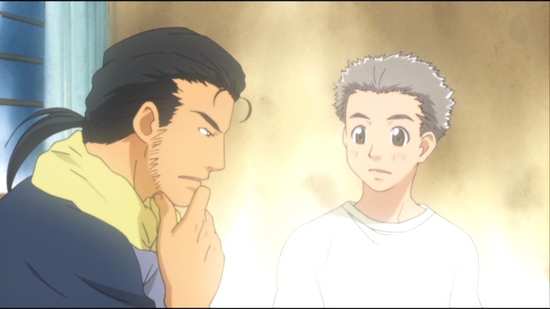
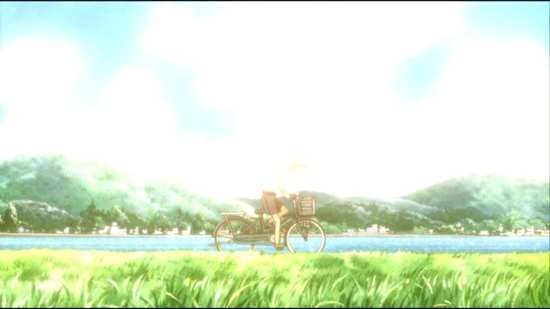
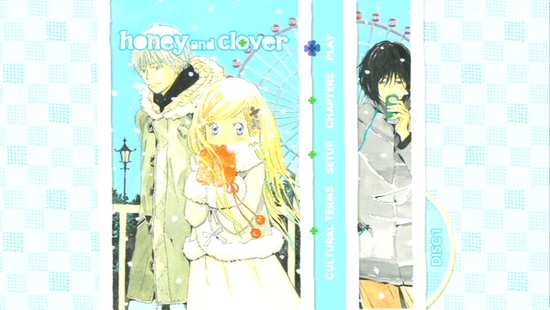

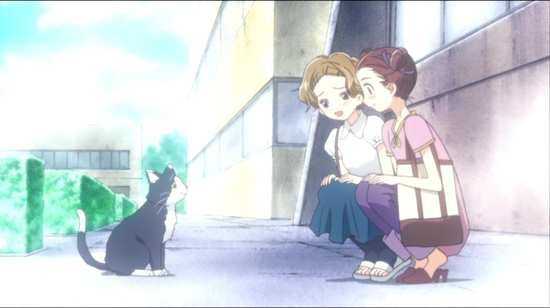
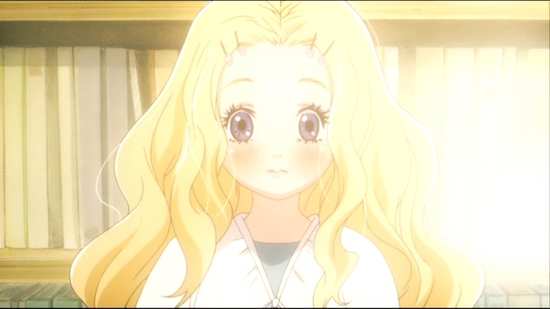
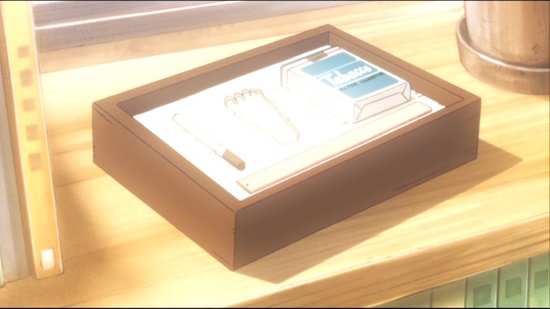
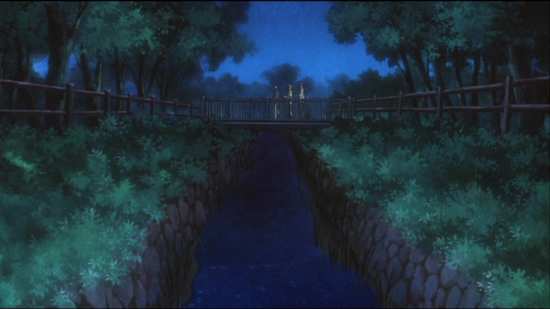
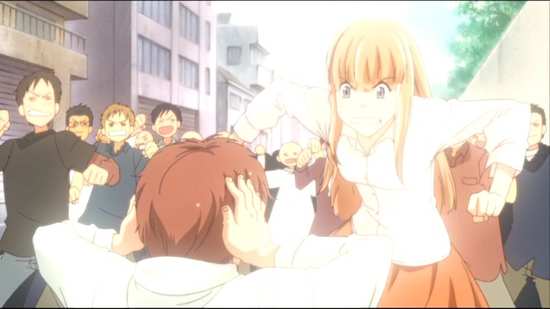
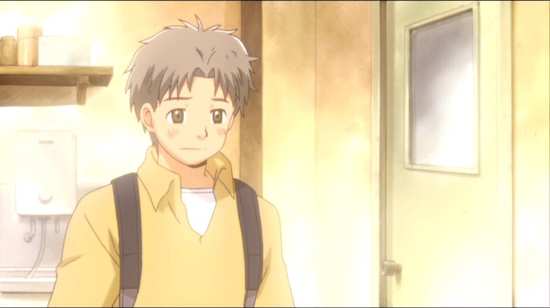
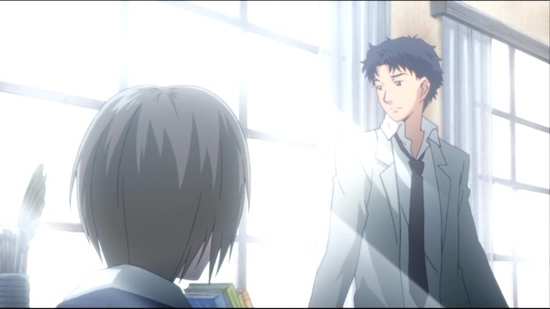

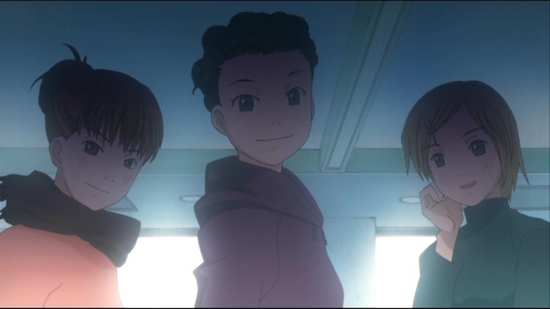
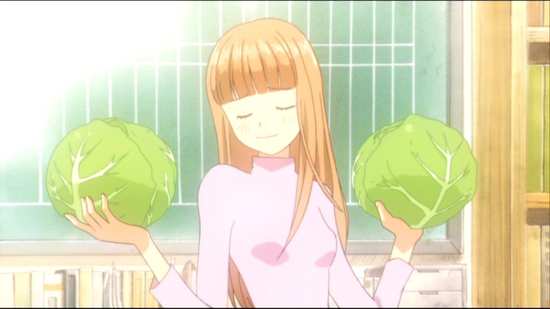
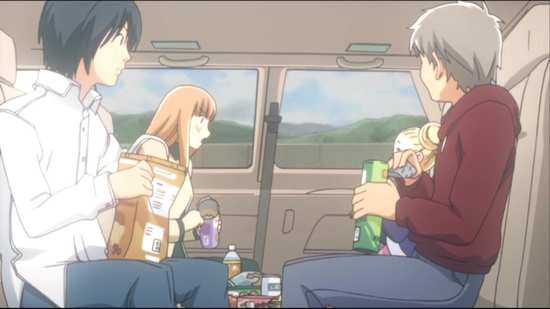
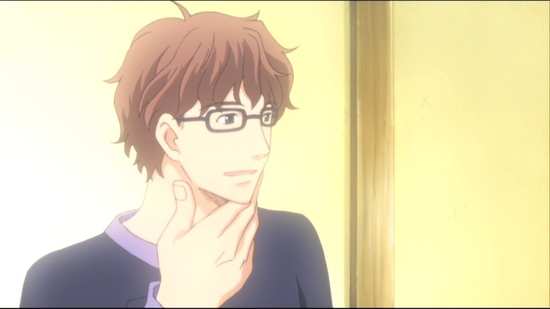
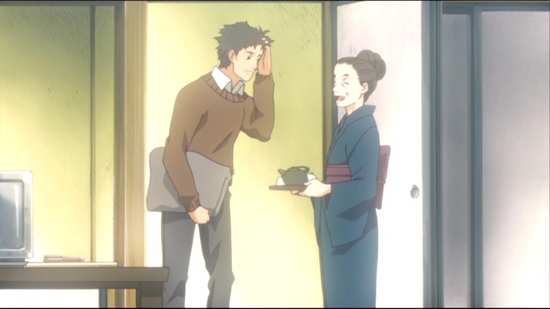
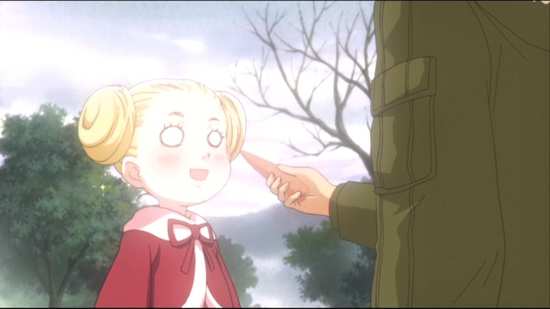
Your Opinions and Comments
Be the first to post a comment!